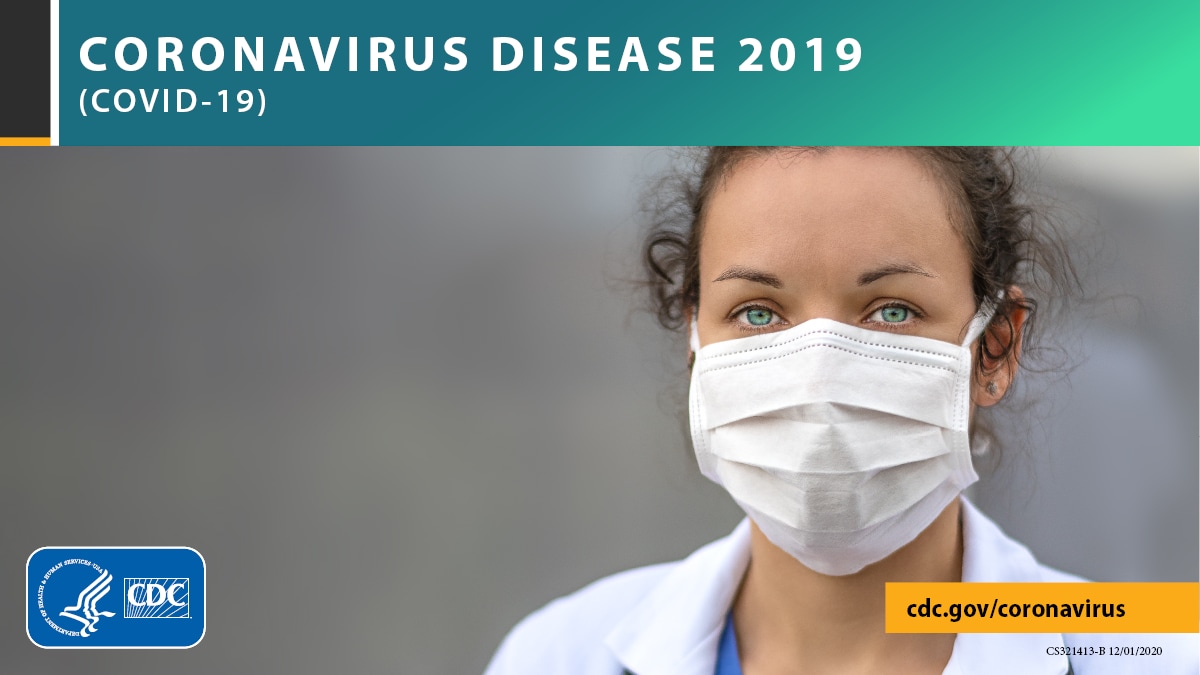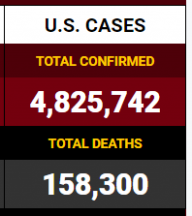Yeah, sure! And weed has been legal forever for the same reason?Baaaaaaaaaaaa
They can't sell them if you don't buy them - everyone knows they cause cancer and still buy them - freedom.
Coronavirus
- Thread starter High kev
- Start date
- Status
- Not open for further replies.
H.A.F.
a.k.a. Rusty Nails
Two completely different arguments, but I can still prove you are just a whiny little bitch.Yeah, sure! And weed has been legal forever for the same reason?
Cigarettes were not banned, even though they have been proven to be unhealthy. They were taxed and regulated.
Weed has never been found to be unhealthy - but was banned for public safety
And you listen to the government about anything?
You are up for a duel?So when you see me without my mask, just worry about making sure yours is in place and you'll be just fine - and stay at least 6 feet away from me.
Not because of the virus
I'll see if I can find the info later on, I'm working right now so I don' thave time to search their site. I will say, though, that it wasn't in the general area like that where it's out for the general public to easily find. It was in the form of a research article/pdf when I read it. They are trying to get the public to be much safer than necessary because the public is pretty fucking stupid when it comes to preventing the spread of illness as it is. People go to work sick all the time when they shouldn't.OK heres todays screen from the CDC https://www.cdc.gov/coronavirus/2019-ncov/prevent-getting-sick/prevention.html You want to show me where it says it can only be transmitted by inhalation into your lungs. I might also suggest reading the whole page.
I'm working right now but I'll try to look later on when I'm free. Where are your sources? BTW, if you are talking about my sources for the statements in that quote then look back through this thread because I already posted those. Search for "lightening" in the thread because I talk about how you are more likely to get struck by lightening in that post.Please post a link with your sources, is it hard?
The percent of cases that are asymptomatic, i.e. never experience symptoms, remains uncertain. Longitudinal testing of individuals over time is required to accurately indicate the absence of symptoms for the full period of infectiousness. Current peer-reviewed and preprint studies vary widely in follow-up times for re-testing, or do not include re-testing of cases. Additionally, studies vary in the definition of a symptomatic case, which makes it difficult to make direct comparisons between estimates. Furthermore, the percent of cases that are asymptomatic may vary by age and studies also vary in the age groups included. Given these limitations, the range of estimates for Scenarios 1-4 is wide. The lower bound estimate approximates the lower 95% confidence interval bound estimated from: Byambasuren, O., Cardona, M., Bell, K., Clark, J., McLaws, M. L., & Glasziou, P. (2020). Estimating the extent of true asymptomatic COVID-19 and its potential for community transmission: systematic review and meta-analysis. Available at SSRN 3586675. The upper bound estimate approximates the upper 95% confidence interval bound estimated from: Poletti, P., Tirani, M., Cereda, D., Trentini, F., Guzzetta, G., Sabatino, G., Marziano, V., Castrofino, A., Grosso, F., Del Castillo, G. and Piccarreta, R. (2020). Probability of symptoms and critical disease after SARS-CoV-2 infection. arXiv preprint arXiv:2006.08471. The best estimate is the midpoint of this range and aligns with estimates from: Oran DP, Topol EJ. Prevalence of Asymptomatic SARS-CoV-2 Infection: A Narrative Review [published online ahead of print, 2020 Jun 3]. Ann Intern Med. 2020; M20-3012.
So, do you even know what all that means?The percent of cases that are asymptomatic, i.e. never experience symptoms, remains uncertain. Longitudinal testing of individuals over time is required to accurately indicate the absence of symptoms for the full period of infectiousness. Current peer-reviewed and preprint studies vary widely in follow-up times for re-testing, or do not include re-testing of cases. Additionally, studies vary in the definition of a symptomatic case, which makes it difficult to make direct comparisons between estimates. Furthermore, the percent of cases that are asymptomatic may vary by age and studies also vary in the age groups included. Given these limitations, the range of estimates for Scenarios 1-4 is wide. The lower bound estimate approximates the lower 95% confidence interval bound estimated from: Byambasuren, O., Cardona, M., Bell, K., Clark, J., McLaws, M. L., & Glasziou, P. (2020). Estimating the extent of true asymptomatic COVID-19 and its potential for community transmission: systematic review and meta-analysis. Available at SSRN 3586675. The upper bound estimate approximates the upper 95% confidence interval bound estimated from: Poletti, P., Tirani, M., Cereda, D., Trentini, F., Guzzetta, G., Sabatino, G., Marziano, V., Castrofino, A., Grosso, F., Del Castillo, G. and Piccarreta, R. (2020). Probability of symptoms and critical disease after SARS-CoV-2 infection. arXiv preprint arXiv:2006.08471. The best estimate is the midpoint of this range and aligns with estimates from: Oran DP, Topol EJ. Prevalence of Asymptomatic SARS-CoV-2 Infection: A Narrative Review [published online ahead of print, 2020 Jun 3]. Ann Intern Med. 2020; M20-3012.
hhibrownsbacker
Super Active Member
Whatever, I gave you the link, use it or ignore it, the choice is yours.I'll see if I can find the info later on, I'm working right now so I don' thave time to search their site. I will say, though, that it wasn't in the general area like that where it's out for the general public to easily find. It was in the form of a research article/pdf when I read it. They are trying to get the public to be much safer than necessary because the public is pretty fucking stupid when it comes to preventing the spread of illness as it is. People go to work sick all the time when they shouldn't.
This is from here:The percent of cases that are asymptomatic, i.e. never experience symptoms, remains uncertain. Longitudinal testing of individuals over time is required to accurately indicate the absence of symptoms for the full period of infectiousness. Current peer-reviewed and preprint studies vary widely in follow-up times for re-testing, or do not include re-testing of cases. Additionally, studies vary in the definition of a symptomatic case, which makes it difficult to make direct comparisons between estimates. Furthermore, the percent of cases that are asymptomatic may vary by age and studies also vary in the age groups included. Given these limitations, the range of estimates for Scenarios 1-4 is wide. The lower bound estimate approximates the lower 95% confidence interval bound estimated from: Byambasuren, O., Cardona, M., Bell, K., Clark, J., McLaws, M. L., & Glasziou, P. (2020). Estimating the extent of true asymptomatic COVID-19 and its potential for community transmission: systematic review and meta-analysis. Available at SSRN 3586675. The upper bound estimate approximates the upper 95% confidence interval bound estimated from: Poletti, P., Tirani, M., Cereda, D., Trentini, F., Guzzetta, G., Sabatino, G., Marziano, V., Castrofino, A., Grosso, F., Del Castillo, G. and Piccarreta, R. (2020). Probability of symptoms and critical disease after SARS-CoV-2 infection. arXiv preprint arXiv:2006.08471. The best estimate is the midpoint of this range and aligns with estimates from: Oran DP, Topol EJ. Prevalence of Asymptomatic SARS-CoV-2 Infection: A Narrative Review [published online ahead of print, 2020 Jun 3]. Ann Intern Med. 2020; M20-3012.

I see nowhere written that no symptoms = no contamination. The rate used for the different scenarios is between 10 and 70 %
I am curious to see your data
Yes ...nothing is known for sure yet... So does it mean we should not care about it is fully studied?So, do you even know what all that means?
As I said, I will try to find it when I'm not working. How low of a risk does it have to be, though, for you to feel that it shouldn't affect the livelyhood of people or the education of the children?This is from here:

I see nowhere written that no symptoms = no contamination. The rate used for the different scenarios is between 10 and 70 %
I am curious to see your data
Absolutely...the world is full of "what ifs" and we can't close businesses down because of them.Yes ...nothing is known for sure yet... So does it mean we should not care about it is fully studied?
Yes, and I am not telling you how many times I heard "if I knew...."Absolutely...the world is full of "what ifs" and we can't close businesses down because of them.
You mean the vast majority of who were on their way out before the virus hit? We lose people at a higher rate from smoking every year (480,000/year vs 158,000 over 6 months) and falling right behind smoking is deaths from obesity. Isn't it interesting that smokers and obese people are also the highest risk people for contracting COVID-19? Should be make being fat and smoking illegal? How about putting parents in jail for having obese kids? Where do you think we should draw the line?
That's life. You don't compromise freedom for "what ifs".Yes, and I am not telling you how many times I heard "if I knew...."
I think everyone should have the right to make their own decisions when it doesn't affect others.You mean the vast majority of who were on their way out before the virus hit? We lose people at a higher rate from smoking every year (480,000/year vs 158,000 over 6 months) and falling right behind smoking is deaths from obesity. Isn't it interesting that smokers and obese people are also the highest risk people for contracting COVID-19? Should be make being fat and smoking illegal? How about putting parents in jail for having obese kids? Where do you think we should draw the line?
You can smoke but not in public places.
Same for the mask, you are free to take it out at home, but I would ask you to wear one in public until the data about the disease will be fully consolidated.
I believe that in the future the food industry will be sued just like tobacco.
I am not sure who should be blamed for the obese kids but what I know is that they don't deserve it so something should be done. This should be a different conversation.
I think I will stop here, if you don't care about protecting others, then we don't have the same moral base for a discussion and we should go back to duels to sort it out
Which freedom you are talking about? The one to show your face or the one from the person next to you to live?That's life. You don't compromise freedom for "what ifs".
Streetpro09
Tester
How about putting parents in jail for having obese kids?
We should start holding parents accountable for something.
- Status
- Not open for further replies.

